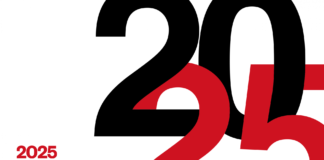Daniel Barbiero
Il Quatuor BRAC è un quartetto internazionale improvvisazionale composto da violino, viola, violoncello e contrabbasso. Adottando un approccio non convenzionale di musica, nonché di strumenti, il gruppo crea un suono che può essere descritto come contrappunto multitimbrico.
The Quatuor BRAC, an unconventional string quartet specializing in timbrally-based improvisation, began as an idea of French contrabassist Benoit Cancoin. Cancoin conceived the notion of creating a common improvisational space in which four disparate voices could assemble and speak their own individual dialects of what Cancoin calls “le ‘parlé musique’ d’aujourd’hui.”
Unlike the standard string quartet consisting of two violins, a viola and cello, the Quatuor BRAC—the name of which is an acronym derived from the initials of its members’ surnames–is made up of a single violin, viola, cello and contrabass. It is also markedly international in character. Violinist Tiziana Bertoncini is an Italian currently based in Vienna; cellist Martine Altenburger and Cancoin are both French; while violist
Vincent Royer is from Germany.
Each of the four members do indeed speak an idiom of the language of contemporary sounds; in addition to their training in the traditions of European art music, each has been deeply involved with improvisational music as well.
Bertoncini came to contemporary music after playing in orchestral and chamber ensembles. Her interests moved her in the direction of improvisation and sonic exploration of the violin, as well as prompted her to undertake multimedia collaborations with artists in various fields.
Horsky Park, her 2011 duet recording with Thomas Lehn on analogue synthesizer, is a masterpiece of sparsely textured sound art. Royer has had a distinguished career as a soloist, recording CDs of the viola works of Horatiu Radulescu and Giacinto Scelsi. As the orientation of these two discs indicates, Royer’s focus has been on spectralism and related experiments touching on the sound properties of his instrument. His interest in improvisation and collective composition has found an outlet in the Ensemble Aléa, which he founded. Altenburger, like the others, has been committed to improvisation as well as to the interpretation of written scores. Her
recording with percussionist Lê Quan Ninh, released on the Insubordinations label, demonstrates an aggressive adventurousness tempered by a nuanced sensitivity to the emerging collective sound. Cancoin, for his part, has had a longstanding engagement with different kinds of improvised music, including jazz. He has recently played a series of intimately scaled solo improvised concerts for individual friends, recently issued on the CD
Instants Minuscules Solo pour un. That recording documents Cancoin’s fascination with the multifaceted sonic profile of the contrabass, which he explores through extended techniques meant to push the limits of the instrument’s voice.
Given these individual backgrounds, it comes as no surprise that the quartet’s collective sound would be one of novel textures, dynamic interplay rooted in attentive listening, and an awareness of the musical value of open space. All of this is captured in the group’s first CD, recorded live at Les Instants Chavirés in Montreuil, France, on 3 March 2011 and consisting of a single 50 minute improvised piece.
Considered in the most general terms, the recording is a remarkable realization of a freely improvised timbral counterpoint. By putting lines made of sound color against each other, BRAC succeed in conserving the fundamental formal quality of the string quartet while working with a largely untraditional content. This isn’t to say that more conventional pitches and phrases are absent; members of the quartet play elongated harmonized tones or sequences of tones at various points in the performance. But the main focus remains on the contrasts and similarities of timbral qualities, and the layering and interplay of sounds in determining changes in textural density and saturation.
Although improvised, the set is in effect a real-time composition made up of planes of sound pushing and pulling against each other. Many passages have all four instruments stacked in fully-voiced strata of long duration. Within these events timbral contrasts are brought out in a variety of ways: Long harmonics extend over a thick underlayer of tapping and creaking that gives way to a midrange drone; rough vibrato bowing or whistling gull-like sounds float over a long-held unresolved dissonance; massed siren-like glissandi move upward and downward with and against each other. Just as suddenly these dense, highly saturated events may dissolve into short, sharp episodes made up of widely spaced plucks and percussive strikes.
The nonstandard makeup of the BRAC quartet—consisting in its substitution of a double bass for a second violin—works to the group’s advantage in crafting a sound profile uniquely its own. The double bass is an essential element in leveraging the full spectrum of colors available to a string ensemble, adding, as it does, a noticeable degree of shading to the overall sound. Beyond supplementing the range of an ordinary string quartet, Cancoin’s bass opens space within the ensemble by supplying spare timbral accents under the other players, particularly Royer’s denser viola lines. In fact, in an inversion of the more usual string quartet practice, Royer’s viola often takes the role of lead voice, with Bertoncini and Altenburger creating inner lines of subtle balance.
In May 2014 the quartet toured Metz and Strasbourg, recording material for an anticipated second release. Video excerpts of the two concerts and of a concert recorded the day before in the studios of Radio France give promising evidence of the group’s delving deeper into the possibilities inherent in timbral counterpoint.







